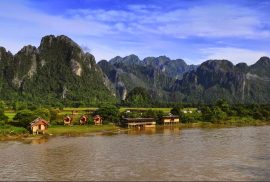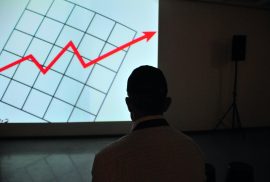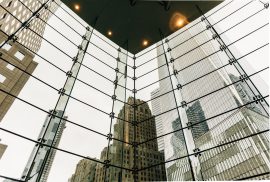Southeast Asia is a region developing and expanding fast in terms of population, importance, and interconnectedness. While the future beckons promisingly for the continued success of the region, potential backsliding into instability threatens to change this trajectory. Non-traditional aspects of security now take the forefront of issues threatening this backsliding. While changes in the balance of power between Southeast Asian nations or the efficacy of institutions remain integral to the region’s future, threats like a warming and unpredictable climate or breaches in cyber-security now have the potential to drastically change the state of security in the region.
Economic and Social Welfare
Introduction
With a population of 260 million people, Indonesia is the fourth largest country globally and one of the most dynamic economies in the global market. According to the World Bank, Indonesia is now included in the status of a middle-income country. The economy in the country is running smoothly, especially during the last decade following the economic contraction caused by the Asian financial crisis of 1997-1998. Due to its fairly rapid economic development, Indonesia has become a developing country and the first economic power in Southeast Asia. Its role in ASEAN continues to be important. Indonesia’s political and economic structure has changed over the years since its independence. In 1950, after the end of Dutch colonialism, economic and political development focused on the agricultural sector to realize a self-sufficient agricultural system by 1960. In the middle of 1970-1980, after the crude oil price fell, the Indonesian economy rapidly developed with urbanization and industrialization programs, for This Indonesia occurred as a consequence of the political change from crude oil exports to manufactured exports.
When it comes to Vietnamese exports, the first item that comes to mind for most people might be Vietnamese coffee. Indeed, this famous good lies among the many items exported out of Vietnam which has led to the establishment of these marketable industries. However, this article will not be exploring these conventional exports but will focus on a lesser-examined good instead- the Vietnamese bride.
This ‘economic good’ of the Vietnamese bride can be located within the larger phenomenon of the mail order bride industry. As defined by Sarker, Cakraborty, Tansuhaj, Mulder and Dogerlioglu-Demir (2013), this industry can be seen through “international marriage brokering agencies as mail order bride services”. In highlighting the centrality of brokering agencies to the market, this definition helps distinguish a bride that is specifically sold as an international ‘product’ against her fellow compatriot who marries overseas, outside of the system. Hence, this serves to demarcate and economise the human bride into a commercial good, which is arguably problematic due to its dehumanising undertones. However, for the purpose of understanding how this industry can be perceived using an economic lens of analysis, these terms will be used in the course of examination below.
Introduction
Tourism has become one of the most important global industries today. To maintain global power, Singapore has to get involve and give value to tourism in the country. Singapore can be considered a small country if you determine it from the amount of land the country has, but if you measure from its economy, it is one of the most growing counties in the world. This statement is pointed out by Hooi Hooi Leana, Sio Hing Chongb and Chee-Wooi Hooyc (2014) who say that ;
“ Tourism is a fast-growing industry in Singapore. Despite the small contribution to the country’s overall GDP, hovering around 8 percent, Singapore’s tourism industry lingers as a noteworthy showcase not only for trade and economic powerhouse but also as a hub for entertainment, media, and culture in Southeast Asia. In 2005, the Singapore Tourism Board heralded its target to ensure tourism played the role as a key economic pillar by tripling tourism receipts to S$30 billion and doubling visitor arrivals to 17 million in 2015. Besides, the “Uniquely Singapore” campaign that launched in March 2004, aimed to show the world the blend of the best of Singapore as the modern world of warm, enriching and unforgettable tourist destination had won a gold award conferred by the Pacific Asia Travel Association. In 2009, the contribution of the tourism industry on economic growth has recorded 7.3 percent and created 5.8 percent out of total employment opportunities. An increasing trend showing 4.1 percent of the total economy from the tourism industry in 2004 has escalated to 7.3 percent in 2009.”
The fourth industrial revolution, commonly known as Industry 4.0, is bringing rapid technological advancements -powered by the rise of digital technologies: cloud, big data, Internet of Things, Analytics, and Machine Learning-, changing the nature of work and increasing demand for a skilled workforce. Technology’s impact on the workforce was inevitable, adding that the most important action was responding to digital developments to optimize the workforce and its talents. Hence, industry 4.0 is rapidly transforming not only IT but business in general, particularly in terms of human-technology relationships.
The fourth industrial revolution or 4IR builds on the digital revolution and combines multiple technologies that are leading to significant shifts in the economy, business, society, and individually. It is characterized by a fusion of technologies that is blurring the lines between the physical, digital, and biological spheres. In practice, it is the idea of smart factories in which machines are augmented with web connectivity and connected to a system that can visualize the entire production chain and make decisions on its own. (Schwab, 2016)
In the midst of the global refugee crisis, there has been much discussion regarding the management of refugees and asylum seekers in the developed world, however, this issue has been somewhat overlooked in Indonesia. Historically, Indonesia has been utilised as a transit country, due to its geographical location, archipelago geography, and bureaucratic functioning. This trend has continued in recent years – in 2016, approximately 13,829 refugees arrived in Indonesia. However, whilst Indonesia may still be characterised as a transit country, this reality is quickly changing, particularly as both Australia and the United States, two primary re-settlement nations, have decreased their refugee intake. In 2016, 761 refugees were resettled to the US, and 347 to Australia, almost a 50% decrease in settlement from the previous year. A drop in re-settlement rates, coupled with an inevitable increase in re-settlement waiting periods, has contributed to the transformation of Indonesia’s role as a country that merely acts as a place of transit, to a destination where refugees are now spending a significant amount of time. Given these circumstances, the need for a more robust solution in the Government’s approach and attitude towards refugees has become evident.
Traffic accidents still remain as a critical problem in Southeast Asia. Based on the report of the ASEAN Regional Road Safety Strategy in 2016, the biggest risk faced by most ASEAN countries is traffic accidents caused by the considerable number of two-wheeled vehicles as the primary transportation. The number of trauma due to traffic accidents is quite high in ASEAN. Compared with other ASEAN countries, Vietnam becomes one of the countries with the highest mortality rate, which is 23,60% of 10,000 per population according to Bloomberg
Changing social layers in society are inevitable things during the globalization era. Technological progress becomes the most observable thing to see. The movement from traditional to modern technology is usually called as modernization. This happens due to the innovations of the world scientists which bring some impacts for the entire layers of society. The positive impact of modernization on human beings can be seen from facilitation in daily activities. For example, labor who initially worked manually to produce goods might take several days to complete. Because of technological support, labor now is able to produce more and faster goods.
Whilst the terms ‘climate change’ and ‘global warming’ are now frequently heard in a number of contexts, whether that be in a professional environment, the classroom, or in your Facebook newsfeed, it can sometimes be difficult to understand why such notions are so alarming – the opportunist may just see these changes as an excuse to flaunt their favourite t-shirt for a few more days a year. However, the ramifications of climate change go far beyond a jacket collecting more dust in your wardrobe. Changes in climate induced by a warming planet are anticipated to spark challenges in social, economic, and political conditions across the globe, particularly within the ASEAN region. In light of this, as a simple game theory model suggests, collaboration of partners within ASEAN, although not always perceived as the easiest and most lucrative path in the short-term, will ultimately be the most rewarding approach, and will play an essential role in harnessing future regional stability and prosperity.










